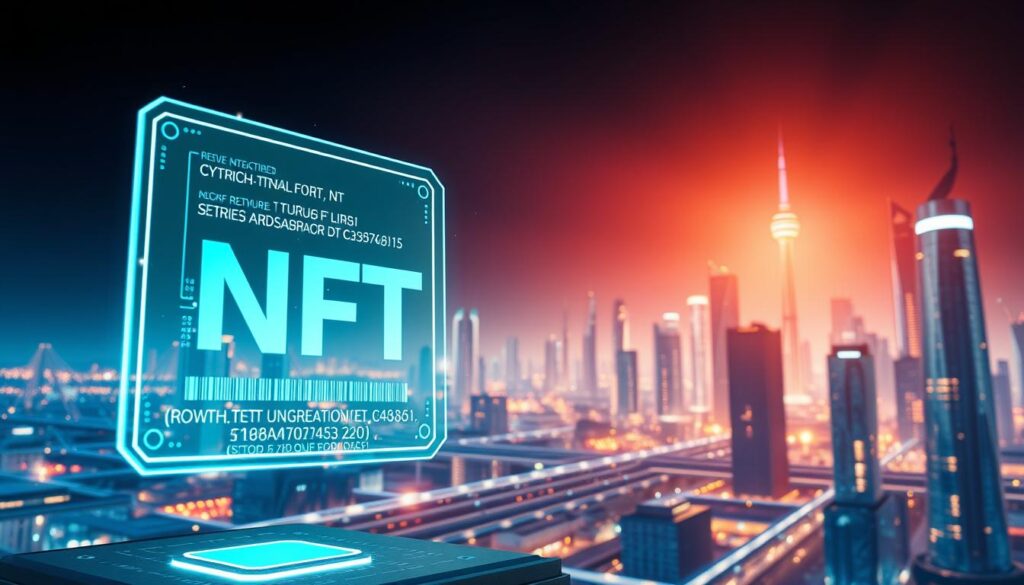Digital collectibles have created new opportunities for investors to profit through short-term trades. Unlike traditional long-term holding strategies, this approach focuses on identifying undervalued assets and capitalizing on market trends. The practice works particularly well for those with limited budgets, as early-stage projects often offer significant growth potential before gaining mainstream attention.
Current market conditions differ from 2021’s explosive growth, but strategic traders continue finding success. Proper research and timing remain critical, as impulsive decisions often lead to losses. Many newcomers underestimate the time required to analyze projects, track floor prices, and predict hype cycles accurately.
Seasoned traders recommend starting with smaller investments to build experience. Platforms like OpenSea and Magic Eden provide accessible entry points, though competition grows daily. Success hinges on recognizing patterns in community engagement, artist reputation, and utility-driven collections.
Key Takeaways
- Short-term trading strategies require market awareness and quick decision-making
- Budget-friendly approaches let newcomers enter the space without major risks
- Historical data shows consistent opportunities despite shifting market trends
- Project research outweighs speculation in achieving reliable results
- Platform familiarity improves efficiency in identifying undervalued assets
Understanding the NFT Landscape
The digital ownership revolution has reshaped how we perceive value in art and collectibles. At its core, this shift relies on blockchain technology to verify authenticity and transfer ownership securely. Unlike physical assets, these digital items carry immutable proof of origin, creating trust in an otherwise intangible space.

What Exactly Are NFTs?
A non-fungible token (NFT) acts as a digital certificate tied to unique items like artwork, music, or virtual real estate. While cryptocurrencies like Bitcoin are interchangeable, each NFT holds distinct characteristics stored on decentralized ledgers. This uniqueness enables true ownership of digital creations.
| Feature | NFT | Cryptocurrency |
|---|---|---|
| Interchangeability | Unique | Identical units |
| Primary Use | Ownership proof | Monetary transactions |
| Value Source | Scarcity & demand | Market adoption |
Why Digital Art and Value Matter
Digital art dominates the NFT space because blockchain solves two critical issues: provenance tracking and counterfeit prevention. Artists like Beeple have sold pieces for millions, proving markets recognize value beyond physical form. Three factors drive valuations:
- Scarcity: Limited editions mimic traditional art markets
- Utility: Access to communities or real-world perks
- Cultural impact: Memorable projects gain lasting relevance
Collectors often value the status and exclusivity NFTs represent, similar to rare trading cards. As more creators enter the space, understanding these dynamics becomes crucial for informed participation.
How to Flip NFTs for Profit Step by Step
Systematic processes separate successful traders from speculative participants in digital markets. Five core actions determine outcomes when trading blockchain-based assets. Each phase requires careful planning and real-time analysis to maximize returns while minimizing exposure.

Essential Steps for a Successful Flip
Market timing forms the foundation. Analyze trading volume patterns and price stabilization periods to identify entry points. Platforms like Magic Eden show historical data to spot trends before hype cycles begin.
Project selection follows, focusing on three pillars:
- Team transparency and roadmap credibility
- Art originality combined with collection utility
- Floor price stability relative to total supply
Acquisition strategies prioritize undervalued traits. Use rarity tools to filter listings by uncommon characteristics. One collector recently turned $200 into $1,800 by targeting low-supply accessories in a gaming NFT series.
| Factor | Short-Term Flip | Long-Term Hold |
|---|---|---|
| Timeframe | 1-7 days | 6+ months |
| Key Metric | 24h volume spikes | Community growth rate |
| Risk Level | Moderate | Variable |
Pricing requires balancing fees and buyer psychology. List items 10-15% above purchase price to account for platform charges. Time sales during peak trading hours – typically 8-10 PM EST – when engagement peaks.
Execution demands discipline. Set limit orders to automate exits when targets hit. Track wallet activity of top traders using Etherscan to mirror profitable patterns. This approach transforms random trades into a repeatable business model.
Identifying Promising NFT Projects and Strategies
Smart investors recognize patterns in successful digital collectibles through methodical analysis. Three pillars determine a project’s potential: leadership credibility, artistic merit, and functional benefits. This approach filters out risky ventures while spotlighting assets with staying power.

Core Evaluation Metrics for Digital Assets
Transparent teams drive sustainable growth in blockchain initiatives. The Supreme Kong collection demonstrates this principle, featuring artist Hossein Diba from Batman Arkham Knight’s development team. Public identities and proven track records reduce scam risks significantly.
Community engagement metrics reveal more than follower counts. Active Discord discussions and organic Twitter interactions often signal genuine interest. Projects tied to celebrities or established brands see 63% higher resale values, according to 2023 market data.
| Factor | Strong Indicator | Red Flag |
|---|---|---|
| Team | Doxxed members with portfolios | Anonymous developers |
| Utility | Exclusive event access | Vague roadmap promises |
| Art Quality | Unique visual storytelling | Generic template designs |
Practical research tools include LinkedIn verification for team members and Rarity Sniper for trait analysis. Projects offering tangible perks like concert tickets or software licenses often maintain value better than art-only collections. Always cross-reference social sentiment with on-chain trading patterns before committing funds.
Early Bird Strategy: Minting and Whitelist Opportunities
Early access strategies give traders a critical edge in competitive markets. Whitelist spots offer guaranteed minting rights at lower prices, often 20-50% below public sale rates. Savvy buyers target these pre-launch phases to secure positions before hype inflates values.

Projects reward genuine community builders rather than passive observers. Consistent Discord participation and creative contributions – like meme contests or feedback threads – increase whitelist chances. One collector secured three spots in August 2023 by helping design a project’s roadmap graphics.
Tips for Getting on a Whitelist Early
Three methods dominate successful whitelist acquisition:
- Twitter engagement: Share project announcements and tag friends
- Discord roles: Complete verification tasks and earn participation badges
- Alpha groups: Join private communities sharing unreleased opportunities
| Feature | Whitelist | Public Mint |
|---|---|---|
| Price | $50-150 | $200-500 |
| Allocation | Guaranteed | First-come basis |
| Timing | 48h window | Minutes before sellout |
Mint maximum allowed quantities (usually 2 NFTs) during whitelist periods. Monitor floor prices immediately after public sales begin. Early sellers often panic-list below mint cost, creating time-sensitive buying opportunities. A recent Bored Ape spin-off saw 40% of whitelist mints resold below initial price within six hours.
Strategic flipping combines early access with secondary market timing. Projects with strong social proof typically rebound within 72 hours, letting traders profit from both mint discounts and panic-sale acquisitions.
Budgeting Insights and Small Investment Strategies
Effective capital allocation separates disciplined traders from reckless speculators in digital markets. Limited budgets demand precision – every dollar must work toward building sustainable returns. This approach combines calculated risk-taking with strict financial controls to maximize opportunities in volatile environments.
Smart Resource Allocation Techniques
Start with projects offering free mints or sub-$300 entry points. These low-risk assets allow testing strategies without major exposure. Allocate 60% of your budget to 3-4 different collections, keeping 40% reserved for sudden opportunities.
Transaction costs eat into profits faster than many anticipate. A $50 mint with $30 gas fees requires 60% returns just to break even. Always calculate:
- Platform commissions (2-5%)
- Blockchain network fees
- Tax implications
| Strategy | Budget Split | Hold Period |
|---|---|---|
| Free Mints | 20% | 1-3 days |
| Low-Cost Projects | 40% | 3-7 days |
| Reserve Funds | 40% | Opportunistic |
When minting multiple NFTs, sell half immediately post-reveal. Hold rarer traits – a Bored ApeYC member recently held a laser-eye piece that gained 1900% in six months. This balanced approach locks in gains while preserving upside potential.
Treat crypto investments as high-risk ventures. Never allocate funds needed for essential expenses. Successful traders document every transaction, analyzing win/loss patterns to refine their methods over time.
NFT Trading Tools and Platform Insights
Advanced analytics platforms have become indispensable for navigating the dynamic NFT marketplace. These solutions empower traders to spot trends, assess asset potential, and manage portfolios with surgical precision. Savvy participants combine multiple tools to create competitive advantages in fast-moving markets.
Leveraging Rarity Tools and Trait Sniper
Rarity Tools dominates as the industry standard for evaluating generative art collections. Projects actively pay for listings here, knowing its 480,000 monthly users trust its rankings. The platform’s scoring system considers trait combinations and statistical outliers.
Trait Sniper delivers instant analysis post-reveal through AI-powered scanning. Free users get basic rankings, while subscribers access historical comparisons. This tool helped traders identify a Pudgy Penguin with rare sunglasses that sold for 9 ETH hours after minting.
Tracking with Icy Tools and NFTBank.AI
Icy Tools provides real-time alerts for sudden floor price movements across major platforms like OpenSea. Its portfolio tracker visualizes profit margins per asset, helping users decide when to hold or sell. The heatmap feature reveals emerging trends in niche communities.
NFTBank.AI automates profit calculations by integrating gas fees and platform commissions. Advanced filters show which assets underperform market averages. One user discovered 37% of their portfolio generated negative returns after fees.
| Tool | Key Feature | Best Use | Pricing |
|---|---|---|---|
| Rarity Tools | Trait combination analysis | Pre-purchase evaluation | Freemium |
| Trait Sniper | 30-second rarity reports | Post-reveal sniping | Free/Paid |
| Icy Tools | Live sales feed | Market timing | $29/month |
| NFTBank.AI | True ROI tracking | Portfolio audits | Custom |
Free versions work for beginners, but serious traders upgrade for premium features. Combining these resources reduces guesswork and creates data-driven strategies. Proper tool mastery often separates consistent earners from occasional winners.
Timing and Market Analysis for NFT Flipping
Mastering market cycles determines success in digital asset trading. Charts reveal patterns where prices stabilize before major moves. Weekly volume analysis helps identify these critical phases when liquidity shifts.
Recognizing Bullish and Bearish Trends
Bull markets show steady volume growth across multiple collections. Look for 3+ days of rising floor prices in blue-chip projects. These conditions signal increased buyer confidence and safer exit opportunities.
Bearish phases often follow crypto market corrections. Ethereum price drops typically precede NFT downturns by 24-48 hours. Track Bitcoin dominance charts – rising values may indicate capital leaving alt assets.
| Indicator | Bullish Signal | Bearish Signal |
|---|---|---|
| Volume Trend | 15%+ weekly increase | 30%+ weekly decrease |
| Social Activity | New Discord members | Moderator inactivity |
| Crypto Correlation | ETH rising | BTC dominance spikes |
Time purchases when Fear & Greed Index drops below 30. This crypto sentiment tool often predicts NFT market bottoms. Combine with collection-specific data like holder count stability.
Set alerts for sudden trading volume spikes in niche markets. Quick reactions during these windows capture maximum upside. Always cross-verify trends across three platforms before executing trades.
Optimizing Sales: Pricing, Listing, and Promotion
Strategic pricing transforms digital assets into profitable sales. Savvy traders balance visibility and value to attract buyers while protecting margins. Every listing decision impacts how quickly NFTs move in competitive marketplaces.
Setting the Right Mint and Listing Prices
Calculate true costs by adding mint fees, gas charges, and platform commissions. A $200 purchase with $50 fees needs $275+ to profit. Use 0.99 ETH pricing to rank higher in sorted listings – buyers often filter low-to-high.
Research recent sales of similar traits before listing. Undercut competitors by 5-10% for faster turnover. After 24 hours, panic sellers vanish, letting you price above mint cost safely. One Bored Ape holder sold a rare hat NFT for 3.2 ETH using this timing strategy.
Boost visibility through social media threads and niche forums. Share backstory about the asset’s uniqueness. Tag relevant communities to spark interest. Successful selling NFTs combines math with marketing finesse.


No comments yet